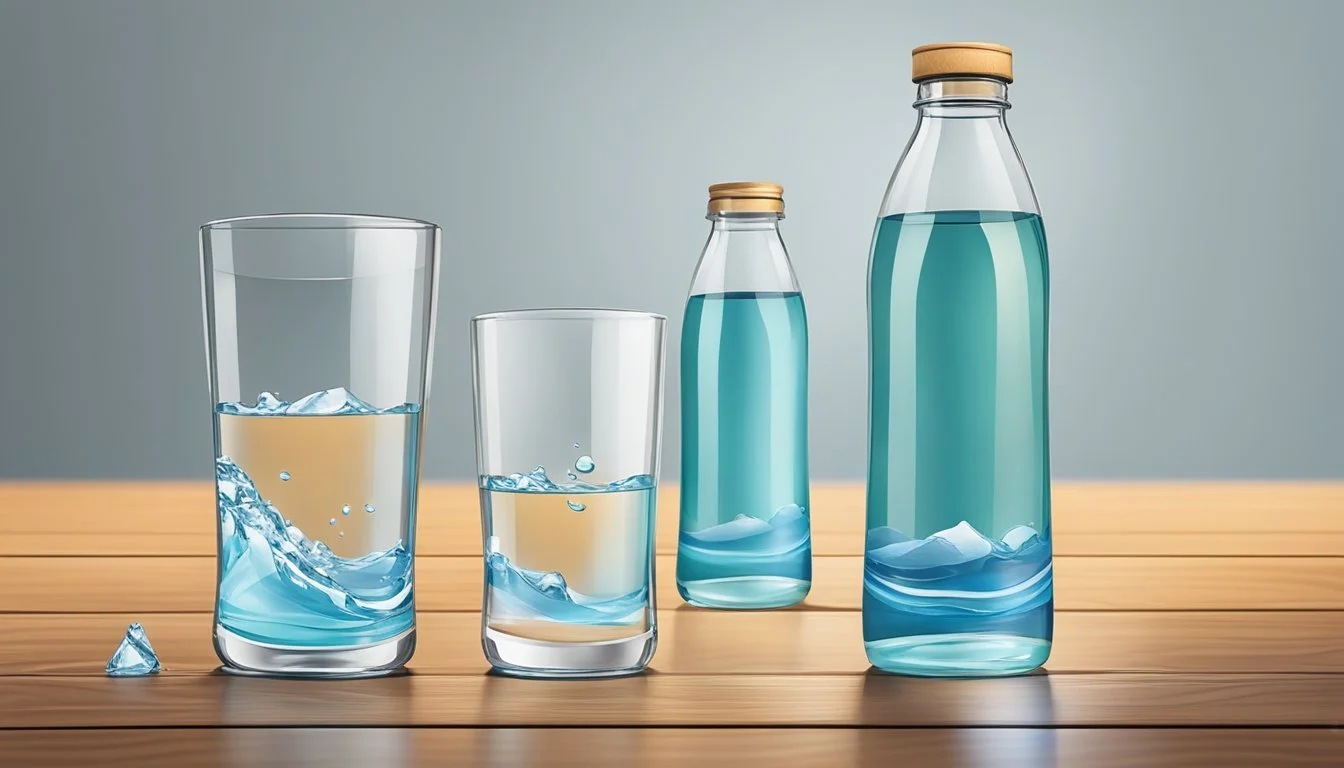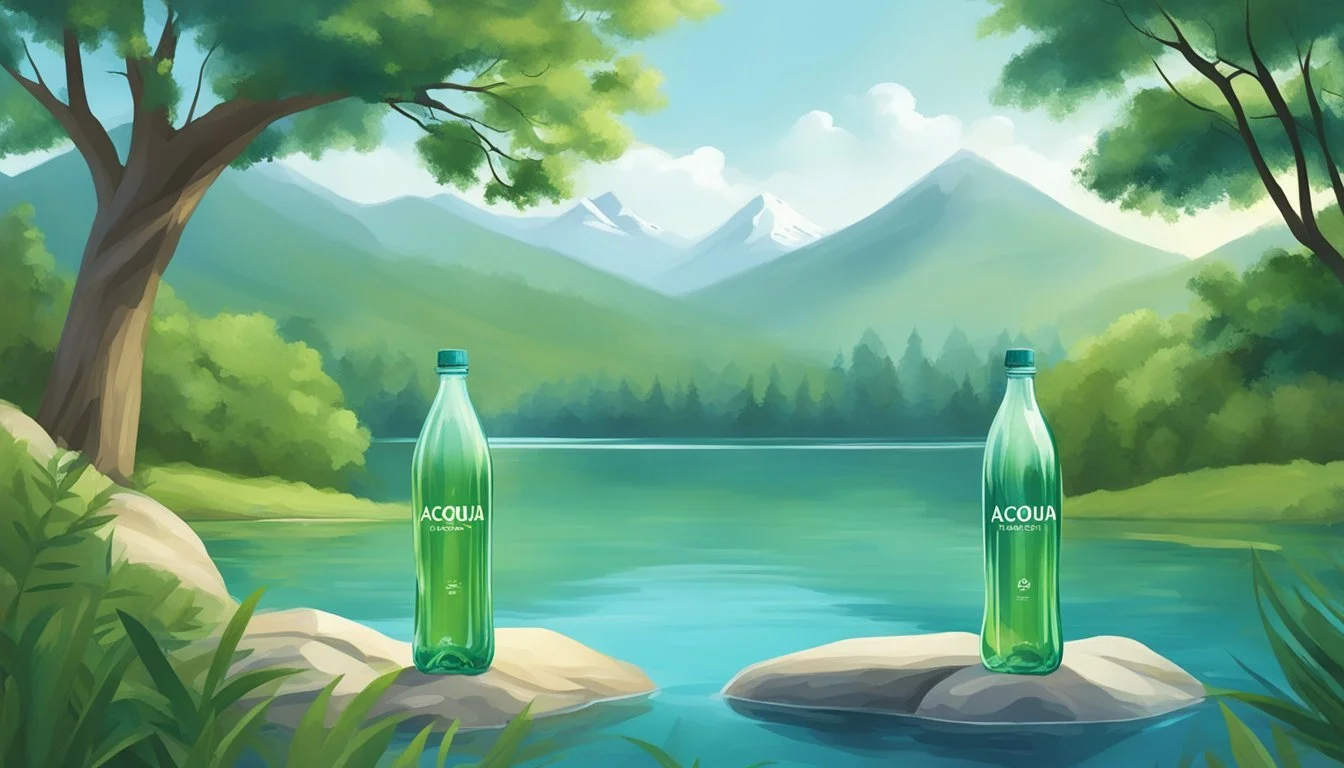Acqua Panna vs. Aqua Carpatica
Comparing Premium Bottled Waters
When it comes to premium bottled water, two names often stand out: Acqua Panna and Aqua Carpatica. Both brands promise exceptional quality and purity, making it challenging to choose between them. Acqua Panna, sourced from the heart of Tuscany, is renowned for its smooth, crisp flavor, often associated with fine dining. On the other hand, Aqua Carpatica offers naturally sparkling and still options, praised for its high mineral content and pristine source in the Carpathian Mountains.
Acqua Panna takes pride in its unfiltered and untreated water, ensuring a natural taste that many consider unparalleled. Meanwhile, Aqua Carpatica emphasizes its low sodium and nitrate-free qualities, catering to health-conscious consumers. Both waters offer unique benefits, making the choice largely dependent on personal preference.
For those seeking a refined and smooth flavor, Acqua Panna might be the ideal choice. Conversely, individuals looking for a mineral-rich, health-oriented option may find Aqua Carpatica more appealing. Ultimately, the decision comes down to whether one prioritizes taste or mineral composition in their bottled water.
Overview of Acqua Panna and Aqua Carpatica
Acqua Panna and Aqua Carpatica are two highly-regarded bottled waters, each with a distinct background and origin. This section will delve into their unique histories and how they have risen to prominence in the bottled water market.
Historical Background of Acqua Panna
Acqua Panna originates from Tuscany, Italy, and has a rich history dating back to 1564. It was first discovered on the estate of the wealthy Medici family. The water undergoes a natural filtration process through the Apennine Mountains, which takes over 14 years. This natural filtration enriches the water with minerals, giving it a unique taste that pairs well with fine dining experiences.
First bottled in 1860, Acqua Panna has become a staple in high-end restaurants around the world. San Pellegrino, a company known for its premium beverages, bottles and distributes Acqua Panna. The water's smooth taste and balanced pH level make it a favorite among connoisseurs.
Historical Background of Aqua Carpatica
Aqua Carpatica hails from the Carpathian Mountains in Romania, another region known for its pristine natural beauty. This spring water is sourced from protected springs located in the heart of these mountains. The natural purity of Aqua Carpatica is one of its standout features, with the water being rich in minerals and devoid of nitrates.
Founded in 2010, Aqua Carpatica is relatively new compared to Acqua Panna, but it has quickly gained recognition for its high quality. The brand emphasizes its clean, crisp taste and its commitment to environmental sustainability, ensuring that the water remains free from pollutants and contaminants. Aqua Carpatica is particularly noted for its low sodium content, making it a healthy choice for everyday consumption.
Both Acqua Panna and Aqua Carpatica offer unique tastes and rich histories that make them stand out in the competitive bottled water market.
Sources and Natural Habitat
Both Acqua Panna and Aqua Carpatica are renowned for their unique sources and natural origins, contributing to their distinct characteristics and appeal.
Acqua Panna's Spring Water Source
Acqua Panna comes from a natural spring located in Tuscany, within the heart of the Apennines. The water travels through the aquifer for 13 years before reaching the surface, where it is bottled directly without any treatment.
The spring is situated in an area known for its pristine environment, which helps maintain the water's purity and balanced mineral content.
Acqua Panna's source is characterized by a low sodium content and a balanced composition of mineral salts. This makes the water light, with a slightly tonic taste that is highly appreciated in fine dining.
The natural filtration process ensures that the water retains its quality and clean taste, reflecting the untouched nature of its origin.
Aqua Carpatica's Mineral Water Source
Aqua Carpatica is sourced from the Carpathian Mountains, a region known for its natural beauty and unpolluted environment. The water comes from deep below the ground, protected by layers of rock that shield it from external contaminants.
This source is rich in minerals and nitrates-free, which contributes to the water's health benefits and crisp taste.
The Carpathian region provides a perfect natural habitat for mineral water, with its volcanic origins adding unique characteristics to the water. The nitrate-free aspect is a notable feature, making it appealing to health-conscious consumers.
Aqua Carpatica's source and unique mineral composition set it apart, ensuring it remains a highly sought-after bottled water brand. Its clear and refreshing taste is a direct result of its protected and pristine mountain origin.
Composition and Mineral Content
The composition and mineral content of bottled water distinguish various brands from one another. Acqua Panna and Aqua Carpatica both offer unique profiles that cater to different preferences in taste and health benefits.
Mineral Profile of Acqua Panna
Acqua Panna is sourced from the lush hills of Tuscany, Italy. This water is known for its smooth and velvety texture, attributed to its balanced mineral composition. Key minerals in Acqua Panna include calcium, bicarbonate, and silica, which contribute to its slightly alkaline pH level, generally around 8.2-8.4.
Calcium, a critical mineral for bone health, is present in significant amounts, roughly 31.1 mg/L, making it a good option for those needing to boost calcium intake. Magnesium is also found in modest concentrations, contributing to its overall smoothness. The mineral balance in Acqua Panna is carefully maintained, ensuring a clean and refreshing taste without any overwhelming mineral flavors.
Mineral Profile of Aqua Carpatica
Aqua Carpatica is sourced from the Carpathian Mountains and is celebrated for being nitrate-free, a rare feature among bottled waters. The mineral composition of Aqua Carpatica includes a notable presence of calcium and magnesium, promoting a sense of refreshment and hydration.
The calcium content in Aqua Carpatica is about 38.8 mg/L, slightly higher than Acqua Panna, which supports skeletal health. Magnesium levels are also appreciable, adding to the water's natural taste and health benefits. Aqua Carpatica's pH level generally hovers around 7.8, making it slightly less alkaline compared to Acqua Panna. This balance helps maintain a crisp and clean flavor profile.
Additionally, Aqua Carpatica emphasizes its nitrate-free attribute, which is beneficial for those seeking purer, uncontaminated water. This feature enhances its appeal among health-conscious consumers.
Packaging and Sustainability
When comparing Acqua Panna and Aqua Carpatica, assessing their packaging and sustainability initiatives is essential. Both brands have made notable efforts in reducing environmental impact through their choice of materials and innovative eco-friendly packaging.
Environmental Impact of Bottling
Acqua Panna utilizes both plastic and glass bottles for its products. Glass bottles are favored for their recyclability and appeal to environmentally conscious consumers. In contrast, Aqua Carpatica is known for its use of BPA-free plastic. The environmental impact of plastic bottles remains significant, despite recycling efforts.
Both brands acknowledge the environmental costs associated with plastic bottle production and disposal. Glass bottles, while heavier and more costly to transport, offer a sustainable alternative. Consumers are increasingly aware of these factors, influencing their purchasing decisions.
Eco-Friendly Packaging Innovations
Acqua Panna and Aqua Carpatica have made strides in developing eco-friendly packaging. Acqua Panna offers a 1-liter glass bottle, highlighting its commitment to sustainable choices. The brand’s use of recyclable materials aligns with broader industry trends toward sustainability.
Aqua Carpatica focuses on reducing its carbon footprint through lightweight plastic bottles that use less raw material. Innovative approaches, such as recycled materials in bottle production, further underscore their dedication to eco-friendly practices. These efforts are part of their broader mission to minimize environmental impact.
Both brands are setting examples within the industry by prioritizing sustainable packaging solutions that cater to eco-conscious consumers, promoting long-term environmental benefits.
Taste and Water Sommelier Insights
When it comes to comparing Acqua Panna and Aqua Carpatica, taste and texture play a significant role. Water sommeliers provide insights into these elements, focusing on what makes each brand unique and suitable for different dining experiences.
Flavor Profile and Texture
Acqua Panna is renowned for its smooth, velvety texture. Sourced from the hills of Tuscany, its taste is often described as subtly sweet, with a well-rounded, mineral-free profile.
In contrast, Aqua Carpatica hails from the Carpathian Mountains, offering a crisp and clean flavor. This water is naturally low in nitrates and boasts a balanced minerality. The texture is refreshing and slightly effervescent, appealing to those who enjoy a more pronounced mineral presence.
Both waters cater to different palates, making them unique in their own right.
Acqua Panna and Aqua Carpatica in Fine Dining
In fine dining settings, Acqua Panna's velvety texture complements delicate dishes. Its subtle sweetness pairs well with light, refined cuisines, enhancing the flavors without overpowering them.
Aqua Carpatica, with its crisp and refreshing profile, is ideal for more robust dishes. The slight effervescence can cleanse the palate between bites, making it a favorite among sommeliers for meals with rich, intense flavors.
Personal preference plays a critical role in choosing the right water for dining. Whether one prefers the smoothness of Acqua Panna or the crispness of Aqua Carpatica, both offer distinct experiences that can elevate a meal.
Health and Hydration Benefits
Both Acqua Panna and Aqua Carpatica offer unique health and hydration benefits, largely due to their mineral composition and pH balance. Understanding these factors can help in making an informed choice.
Hydration and Mineral Intake
Acqua Panna is known for its balanced pH level, around 8.0, which contributes to its smooth taste and easy drinkability. It also contains essential minerals like calcium and magnesium. These minerals are crucial for maintaining proper hydration and bodily functions.
Aqua Carpatica, on the other hand, is naturally carbonated and also rich in minerals such as magnesium, calcium, and bicarbonates. These minerals not only aid hydration but also support various bodily functions. Magnesium is vital for muscle function and energy production, while calcium supports bone health.
Health Implications and Bone Health
The mineral content in both waters influences health beyond hydration. Acqua Panna's calcium and magnesium are beneficial for bone health. Calcium is essential for maintaining bone density, while magnesium helps in calcium absorption.
Aqua Carpatica also provides a calcium boost, supporting bone strength and health. Its unique feature is its low sodium content, which is beneficial for those managing blood pressure. The bicarbonates in Aqua Carpatica aid in digestion and neutralize stomach acid, offering potential relief from acid reflux.
In summary, while both waters support hydration and mineral intake, their benefits extend to bone health, digestion, and overall wellness.
Filtration, Purity, and Quality
Filtration, purity, and quality are key factors in determining the value of bottled water brands like Acqua Panna and Aqua Carpatica. The natural filtration processes and the rigorous assessment of water purity play significant roles in shaping these brands.
Natural Filtration Processes
Acqua Panna is sourced from the springs in Tuscany, Italy. It undergoes a natural filtration process as it travels through layers of limestone, which enhances its mineral content and imparts a smooth taste. This natural journey helps in filtering out many contaminants, contributing to the high-quality water that consumers enjoy.
Aqua Carpatica, on the other hand, is sourced from the Carpathian Mountains in Romania. The natural rock formations act as filters, removing impurities and enriching the water with natural minerals. This unique filtration process ensures that Aqua Carpatica maintains a high standard of purity and quality.
Assessment of Water Purity
Acqua Panna undergoes extensive testing to ensure it meets strict purity standards. The water is consistently monitored for contaminants such as heavy metals, nitrates, and other pollutants. Results from these tests ensure that the water is safe for consumption and meets international quality water standards.
Aqua Carpatica also emphasizes purity in its branding. It highlights the low levels of nitrates and sodium in the water. The brand invests in rigorous testing protocols to ensure its spring water remains free from unwanted contaminants. These efforts underscore Aqua Carpatica's commitment to delivering good water quality to its consumers.
Market Perception and Brand Comparison
Acqua Panna and Aqua Carpatica are both esteemed premium bottled waters with distinct market positions and consumer perceptions. Exploring their differences provides valuable insights into their standing as preferred choices among consumers.
Market Position of Acqua Panna and Aqua Carpatica
Acqua Panna is renowned for its Tuscan heritage, symbolizing elegance and sophistication. It is often found in upscale restaurants and fine dining establishments across Europe and North America. The brand boasts a balanced pH level around 8.0, catering to those mindful of dietary pH balance.
Aqua Carpatica, sourced from the Carpathian Mountains, is marketed heavily on its purity. Known for being naturally nitrate-free with low sodium levels, it appeals to health-conscious consumers. The brand has gradually built its reputation, especially in Europe, as a healthier choice among premium bottled waters.
Comparative Analysis of Premium Brands
In the premium bottled water market, both Acqua Panna and Aqua Carpatica have unique selling points. Acqua Panna's smooth taste and association with luxury enhance its market perception. It is also appreciated for its neutral pH, which some believe contributes positively to a balanced diet.
Aqua Carpatica, on the other hand, leverages its naturally nitrate-free status and low sodium content. These health benefits are major discussion points for consumers looking into ecological and health aspects of their water choices. While Acqua Panna is more commonly found in high-end dining venues, Aqua Carpatica is getting recognized for its uncompromised purity and environmental consideration.
Both brands remain strong contenders in the premium bottled water market, each appealing to different aspects of consumer preferences and values.





